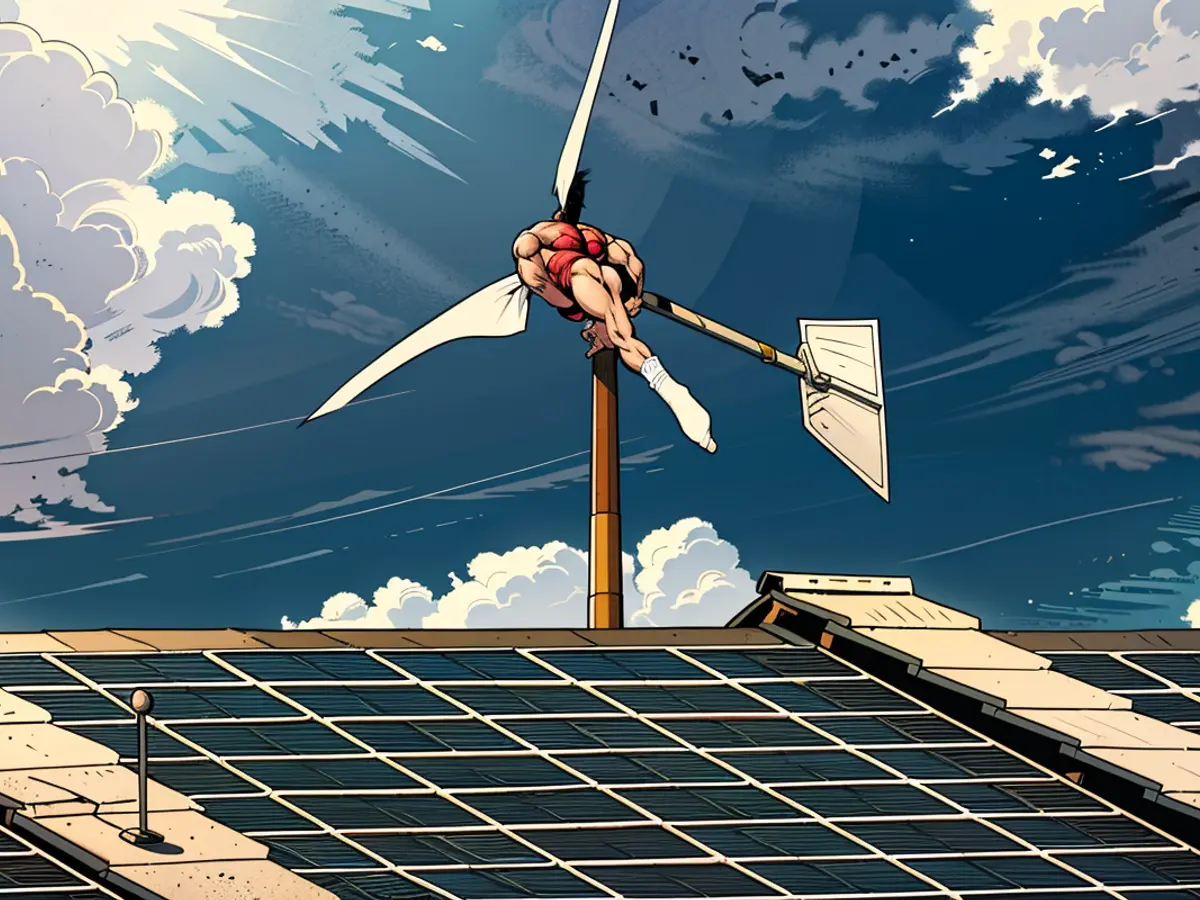Consider the Benefits of Installing a Wind Turbine.
Thinking about reducing your electricity bills? Take a look at alternative energy sources like wind-driven electricity! With innovations in solar power making these options more accessible, and manufacturers designing wind turbines for individual homes, it might be time to consider investing in one.
Wind Turbines: Horizontal and Vertical
When it comes to residential wind turbines, they're similar in design to industrial and commercial options but on a smaller scale. Horizontal axis turbines (with two or three blades) are the most common type, while vertical axis turbines with different designs are suitable for home use. The latter may take up less space, which is beneficial if you're tight on space.
Instruction: How much does a residential wind turbine cost?
The average amount a household would spend on installing a windmill is around $50,000, as the average cost per watt is between $4,000 and $8,000 (Source: Colorado State University Extension Service). There are various tax credits available to help you cut costs. Take, for instance, the Inflation Reduction Act, which lets you save up to 30% on installations. Moreover, you could also be eligible for state or local credits when you buy a windmill. Don't forget to check your eligibility for both federal and local programs that support solar and wind energy sources.
If you're looking for a small backup power source to charge a whole house battery or complement another power supply like solar panels, you can find a 1.5-kilowatt, vertical axis wind turbine for as little as $500.
Wind turbines: How efficient are they?
Although they're expensive, wind turbines are incredibly efficient. Compared to solar panels at 20% efficiency, windmills have an average efficiency of 50% and can reach up to 59% efficiency under optimal conditions (World Economic Forum). This means they can help you significantly reduce your energy bills - a wind turbine can typically pay for itself within six to 20 years of installation.
How do you determine the right size for your wind turbine?
The average household consumes between 800 and 900 kilowatt-hours of electricity each month (U.S. Office of Energy Efficiency and Renewable Energy). To cut down on your energy bills, you'll need a wind turbine capable of generating between 5 and 15 kilowatts. To calculate the exact amount of power you'll need for your specific household, review your electric bill and average out your monthly usage. Once you know this, a professional can assess the wind conditions in your yard to decide the appropriate blade size for your turbine. Residential wind turbine blades can vary from 4 feet to well over 50 feet in length, depending on the wind speed, so a wind turbine may not be suitable if your average wind speed necessitates a huge windmill.
Cons of Installing a Residential Wind Turbine
Despite their efficiency, wind turbines have some drawbacks. They contain moving parts, which means they'll need more maintenance than solar panels because the blades can be damaged by storms or high winds. Also, these turbines only work when there's wind, even though they'll continue to produce power in the dark and on overcast days. This unpredictability makes them infeasible as the sole power source in most situations. And don't forget about the noise factor: wind turbines can be noisy and might not appeal to some, so this could be a potential downside.
Read also:
Installating a residential wind turbine can help power your home, reducing reliance on traditional electricity sources. With the availability of vertical axis turbines designed for homes, you can consider having a small wind turbine to complement solar panels or provide backup power, costing as little as $500 for a 1.5-kilowatt model.








